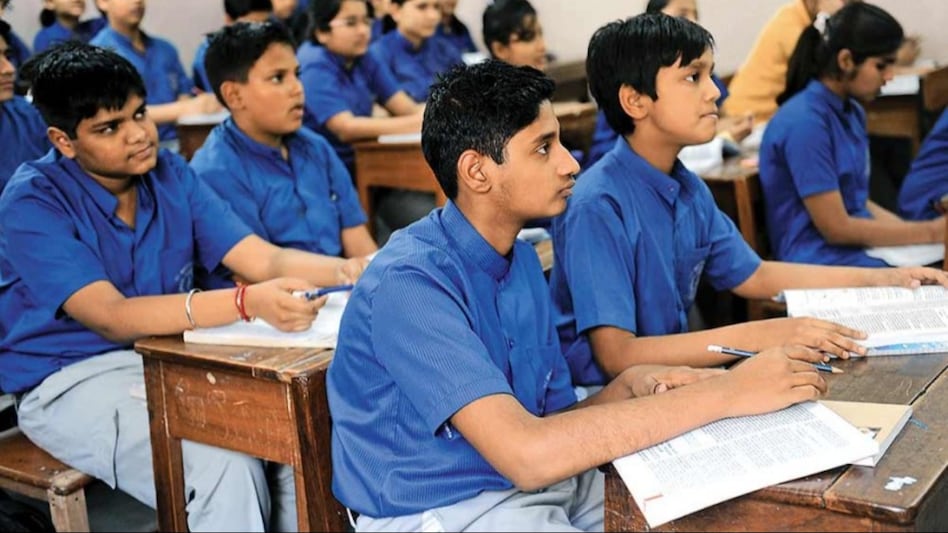 Last year's budget underscored the importance of enhancing women's empowerment
Last year's budget underscored the importance of enhancing women's empowerment Last year's budget underscored the importance of enhancing women's empowerment
Last year's budget underscored the importance of enhancing women's empowermentIndia surpassed China last year to become the world’s most populous country. Not just that, with more than 253 million adolescents (ages 10-19 years), India has a unique advantage of housing the largest share (20%) of the world’s adolescent and youth population. This offers India a ‘demographic dividend’, which refers to benefits stemming from a large share of the working-age population.
However, the benefits of this demographic dividend can be reaped only for another 30 years and that too with strategic and timely investments in adolescents. As the nation prepares for the interim Union Budget 2024-25, to be presented on February 1, prioritizing adolescents and youth becomes not just an option but a necessity for sustainable development and economic growth. Every year, approximately 12-14 million people will enter the workforce, largely from the northern states. This young population, if adequately nurtured through education, healthcare, and skill development, can significantly contribute to the nation's economic and social development.
In 2023-24, the Ministry of Health & Family Welfare received an allocation of Rs 89,155 crore — a 12.6% increase from the previous year. However, this allocation remains substantially lower than the target of 2.5% of GDP target by 2025 set by the National Health Policy, 2017. The budget for family welfare awareness fell by 8.6% from Rs 40 Crores in 2022-23 to 36.56 Crores in 2023-24. Such low and declining budget allocations directly impact initiatives crucial for the young population, such as family planning and health literacy. This hinders efforts to empower young girls and women, particularly in making informed health choices.
There is an urgent need to strengthen and expand the primary healthcare infrastructure, essential for adolescent health through more robust investments. The shortage in primary healthcare centers highlights the gap in accessible healthcare or fulfilling the promise of universal healthcare. There is also a need for targeted adolescent health programmes that not only address specific health issues but also promote overall well-being and mental health, which are crucial during adolescence.
In the context of education and skilling, the budgetary allocations have seen an increase but not in proportion to the need. The New Education Policy (NEP) envisages spending on education to be at least 6% of GDP, a target far from being met by current allocations. Effective implementation and impact assessment of education initiatives are critical for adolescent development, especially considering the aftermath of the COVID-19 pandemic, which has disrupted traditional learning pathways.
Last year's budget underscored the importance of enhancing women's empowerment, which now needs to be solidified through substantial and increased financial commitments. The COVID-19 pandemic starkly revealed existing gender disparities, particularly in areas like technology access, healthcare, and workforce participation, underlining the critical need for dedicated investments in adolescent girls and women. As fertility rates decline and societal structures evolve, the role of women in the workforce becomes increasingly pivotal in driving economic growth. This necessitates a comprehensive approach to support health, education, skill development, and overall empowerment of women and adolescent girls. A recent United Nations policy brief has also highlighted that investing in women's human capital can lead to significant economic and social benefits and help us reap a gender dividend.
The window of opportunity for harnessing India's demographic dividend is limited. This dividend is expected to be open until 2055-56, with its peak projected around 2041. At this peak, it is estimated that 59% of India's population will be within the working-age bracket of 20-59 years.
The window will then begin narrowing and close around 2061. According to the UNFPA’s India Ageing Report 2023, by 2050, over 20% of India's population will be elderly. By 2046, the elderly population in India will surpass the population of children (below the age of 15 years).
Thus, the upcoming budget is an opportunity to not miss this crucial window of demographic advantage. Prioritizing adolescents in budget allocations means investing in areas directly impacting their growth and development. This includes enhanced spending on education, vocational training, nutrition, healthcare facilities tailored to adolescent needs, and initiatives that promote gender equality and mental health.
India's future lies in its young population. The decisions made today will shape the economic and social trajectory of the nation. Investing in adolescents is not just a moral obligation but a strategic choice that can yield substantial dividends in the form of a healthy, educated, and skilled workforce. The Budget must, therefore, place adolescents at the forefront, ensuring that investments made today will pave the way for a prosperous and equitable future.
The author is the Executive Director of Population Foundation of India.